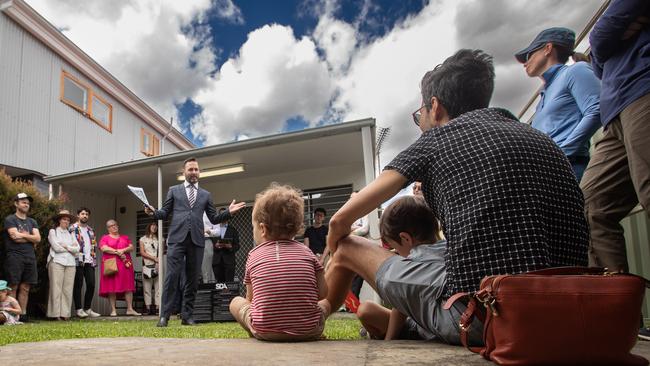Sydney and Melbourne at risk of housing correction as rates bite
Modest corrections could strike top east coast property markets, while Perth and Brisbane homes could dodge the fallout | FULL LIST

Australia’s top housing markets will see falls next year as interest rate hikes hit households just as the economy slows, according to forecaster SQM Research.
The research house has warned a correction, albeit a modest one, could strike markets along the east coast, with Sydney and Melbourne particularly at risk after their recent strong runs.
But the resources-backed capitals of Perth and Brisbane could dodge the fallout, with expectations they will ride the tailwinds of a recovering Chinese economy as it boosts demand for commodities like iron ore, leaving buyers in those markets cashed up.
The real pain is expected to come from rises in interest rates, which have been ratcheting up since 2022 and could rise further next year.
“Another year of anticipated strong population expansion – albeit slower than 2023 – plus an ongoing shortage of new dwellings will limit the fall in housing prices to single percentage digits and the price falls should be limited to mainly Sydney, Melbourne, Canberra and Hobart,” SQM Research managing director Louis Christopher said.
He said that slowing employment growth, with unemployment tipped to approach 5 per cent next year, would more than offset another year of strong migration.
SQM warned that the consecutive rises were expected to cause a rise in distressed sales next year, with this already being seen in NSW.
Overall, Sydney is expected to see a fall in dwelling prices up to 4 per cent.
The biggest pain could hit the mortgage belt in Sydney’s middle to outer ring suburbs, where SQM warned that freestanding houses could suffer a larger correction. By contrast, Sydney units are expected to outperform and the inner ring is still expected to have price rises as top end property is soaring on the back of demand from foreign investors.
SQM’s annual update, the Housing Boom and Bust Report, has a base case forecast that average national dwelling prices will change in the range from a 1 per cent drop to a 3 per cent rise.
SQM said that the correction in prices could also hit Canberra and Hobart.
Adelaide and Darwin are expected to remain steady or record a minor rise or dip.
But the gateway market of Sydney has already seen a “significant” deterioration in housing affordability.
The ratio of repayments to household incomes has risen to generational highs, and based on the city’s median dwelling price of $1.1m, housing is out of reach for most working adults.
Melbourne is also forecast to have a modest correction with prices tipped to fall by up to 3 per cent. That city’s top end is still expected to rise, and units are also expected to outperform.
Canberra is forecast to record the largest falls of all cities with declines of 4 to 8 per cent as government spending slows and more housing is completed.
The forecasts are based on the expectation that net short and longer-term migration peaks next year and then eases, so that total population growth for 2024 falls back to about 460,000 people.
Inflation is expected to ease to between 3 and 4 per cent by the end of next year.
SQM warned that if Australia’s migration rates failed to slow as anticipated, its base case forecasts of a mild correction would not materialise.
But housing price falls could be more acute if inflation were to accelerate to the point of forcing the Reserve Bank to lift the cash rate beyond 5 per cent.
An energy crisis, driven by conflict in the Middle East, would also force the central bank to lift interest rates more aggressively over 2024 and probably trigger a sharp recession in Australia.
The ongoing imbalance between demand and supply is expected to put upward pressure on rents around the country. Asking rents are expected to rise between 7 and 10 per cent, with Perth tipped to record the largest increase of 12 to 15 per cent.
While SQM expects an easing in population growth to 460,000 people, it also expects a sharp decline in dwelling completions over 2024, to 153,000 dwellings.
Mr Christopher said if the housing market had another strong year, it would be due to firm employment growth and migration growing more quickly than expected, and homeowners managing to withstand the higher lending rate environment.








To join the conversation, please log in. Don't have an account? Register
Join the conversation, you are commenting as Logout